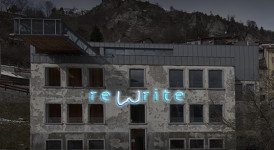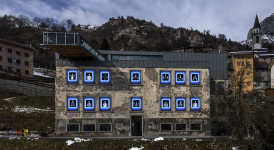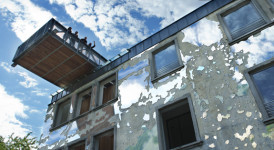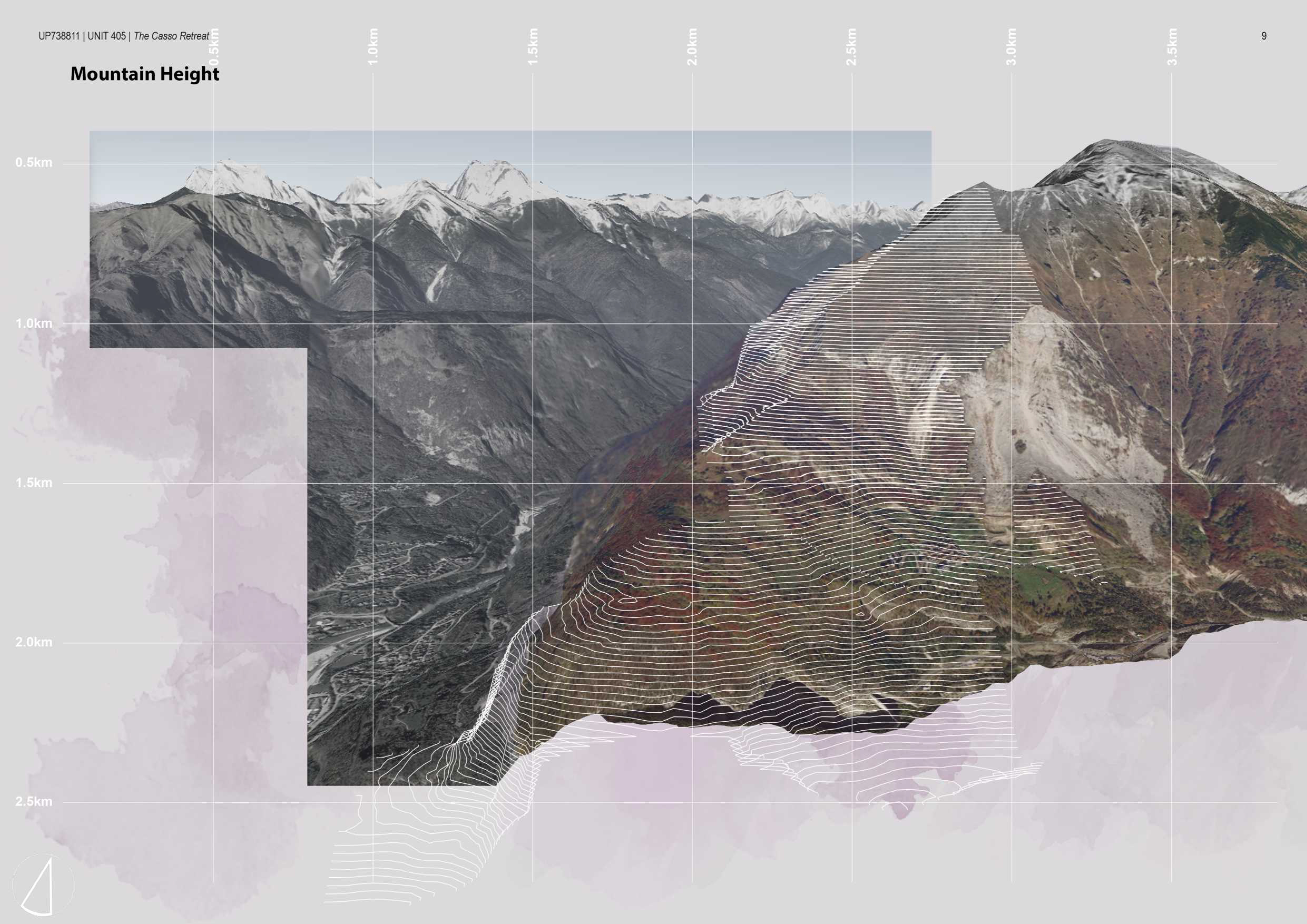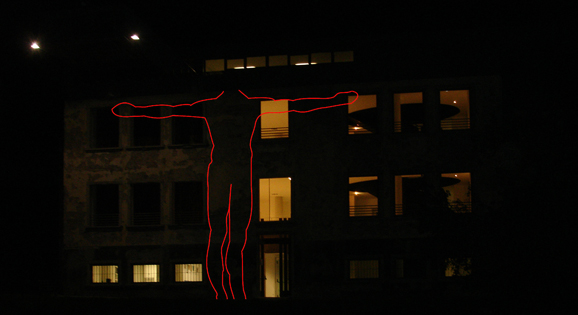
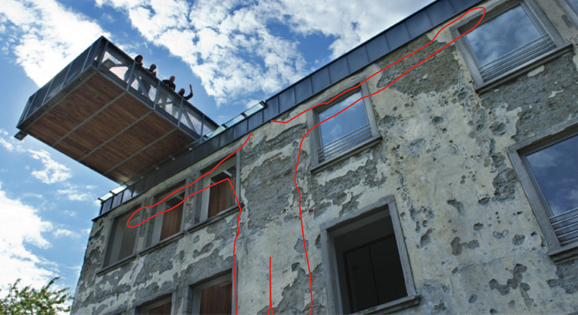
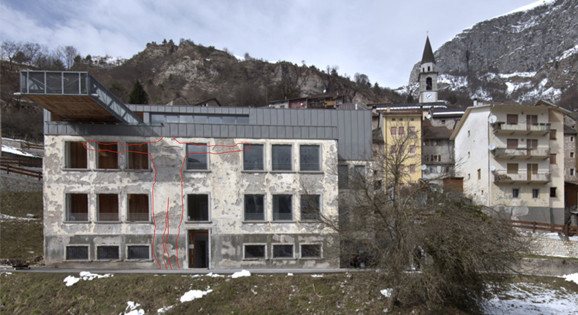
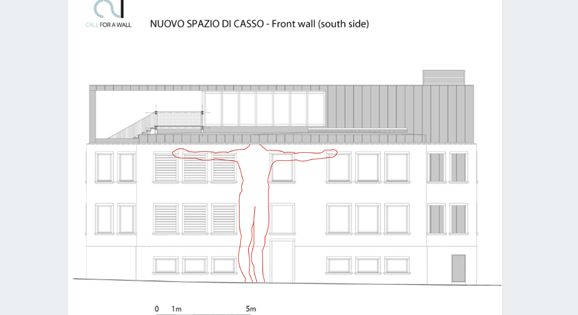
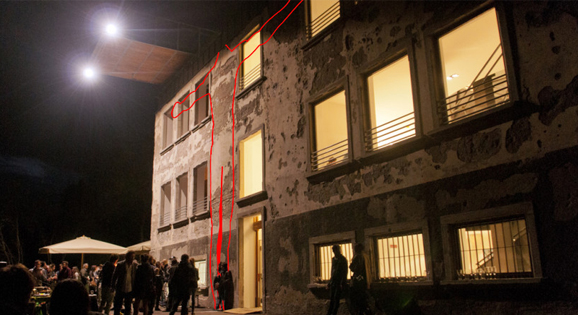
The piece of work Con la testa tra le nuvole ma con i piedi nella terra comes from some reflections following a short but intense dialogue with the curator of Dolomiti contemporanee during a visit in Casso. The stop over in Casso is part of the planning of all the installations, and I immediately feel an unavoidable direct confrontation with the place I will have to set up my piece of work in.
It is about some kind of dress-making, but with images and moods, sewing those images on a geogragic setting that does not belong to me but that I still try to make it familiar in my own way, entering in contact with it, exploring it. One thing which I found particularly fascinating is the emphasis that the curator put on the concept of ‘future’ interpreted as possibility, through the art, to see this area to revive, an area which has been wiped by a silent sorrow that since 50 years hovers on its inhabitants, on both the survivors but also the new generations. This is an open wound which has not been healed yet. People here are concrete, and especially the youngest generation feel the need to be revived, or simply to dream. The biggest hurdle has been to keep the balance between those two tendencies, and repudiate a false rethoric of death.
Rather, and in a quite spontaneous way, in a first planning phase the basic idea has been developed around a human figure, that because of its structure looks like a tree, with the head and feet hidden one by the clouds, plunged in various thoughts full of hopes, and the other hidden in the soil, as symbol of the roots, hence, life. This soil is something to respect as preexisting us in the history, and that now accepts us when the circle of life comes to an end in a cicle that sees people taking energy by the soil through their existence but that we need to give back at the end.
Editorial review and biographical overview by Marcella Ferro
–
L’opera Con la testa tra le nuvole ma con i piedi nella terra nasce da alcune riflessioni fatte a seguito di un breve ma intenso dialogo con il curatore di Dolomiti Contemporanee, durante il sopralluogo a Casso. Tappa, quest’ultima, che rientra nella progettazione di tutte le installazioni ideate. Sento, infatti, imprescindibile il confronto diretto con il luogo in cui dovrò allestire l’opera.
Si tratta, potrei dire, di fare una sorta di lavoro di sartoria, cucendo immagini e stati d’animo a una geografia che non mi appartiene ma che cerco di rendere familiare nel mio immaginario, entrando in contatto con essa, esplorandola. Mi ha colpito, inoltre l’accento posto dal curatore sul concetto di proiettivo, inteso come possibilità, attraverso l’arte, di veder rinascere un territorio in qualche modo cancellato, a causa di un dolore silenzioso che da cinquant’anni aleggia fra gli abitanti sopravvissuti e finanche nelle nuove generazioni. Una ferita che certo non si è ancora rimarginata. Qui la gente è concreta, pochi grilli per la testa, eppure, soprattutto la generazione più giovane, sente la necessità di rinascere o più semplicemente di sognare. La difficoltà maggiore è stata proprio quella di mantenermi in bilico fra queste due tendenze rinnegando una falsa e pietosa retorica della morte.
Piuttosto, in maniera del tutto spontanea, in una prima fase progettuale l’idea di base è scaturita con grande semplicità, ritrovandomi così io a immaginare una figura umana, che per la sua forma fa pensare al tronco di un albero, con la testa e i piedi nascosti l’una nelle nuvole, immersa in pensieri pieni di speranza, e gli altri nella terra, simbolo di radici e quindi di vita. Terra cui portare rispetto giacché essa ci ha preceduto nella storia e ci accoglie quando il cerchio della nostra vita volge alla chiusura, in un ciclo che ci vede trarre energia da essa lungo tutta la nostra esistenza e che al termine ce ne chiede la restituzione.
Revisione editoriale biografica e sinottica a cura di Marcella Ferro
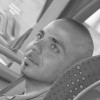
 San Vito di Cadore
San Vito di Cadore
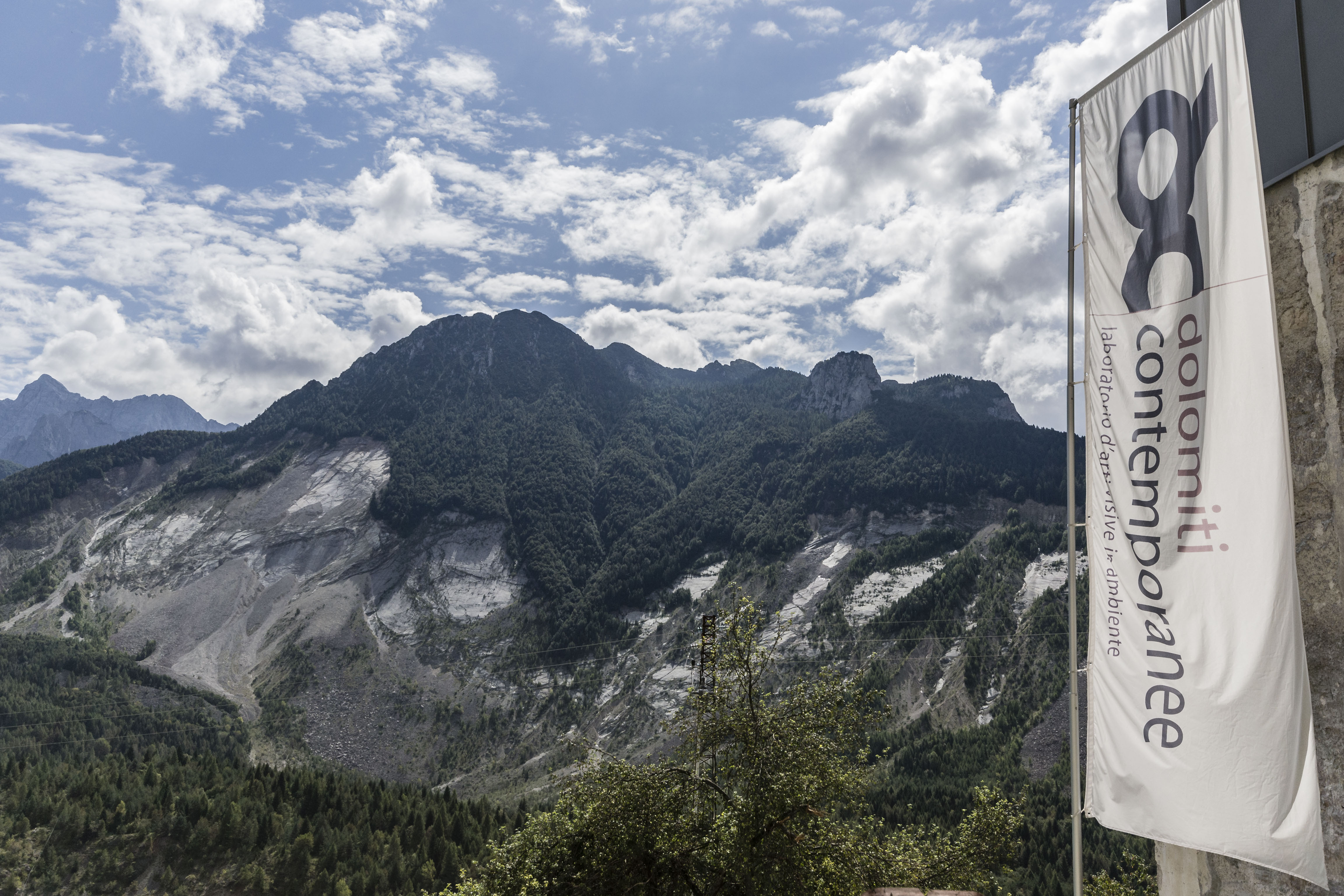
Tuesday, June 15th 2021, 2 – 4 PM, webinar panel:
two calls for vajont: fase _restart.
Vajont: [...]





